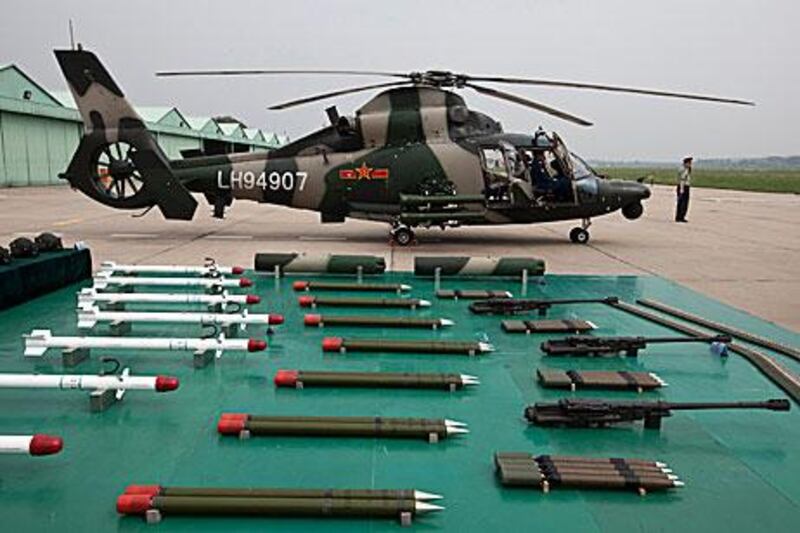TONGZHOU, CHINA // China showed off an elite helicopter unit to world media today in its latest bid to address concerns about its growing military might amid increasingly aggressive moves to assert its sovereignty over the South China Sea.
China organises annual tours of military bases to try to assuage those concerns and to answer criticism over a perceived lack of transparency, but officials refused to answer any contentious questions.
While the defence ministry announced over the weekend it would set up a formal military garrison for the South China Sea, officers accompanying reporters to the Tongzhou base in Beijing's far east avoided the issue.
"Our military's aim is to protect peace. The training exercises we carry out are normal and in line with what we always do," Zhang Zhilin, the jocular commander of the Army Aviation 4th Helicopter Regiment, said.
China has conflicting claims with the Philippines, Vietnam, Brunei, Malaysia and Taiwan across the South China Sea, key shipping lanes thought to contain rich energy reserves.
Asked about whether he and his comrades could or would deploy to the South China Sea, Mr Zhang answered simply: "Our deployments are decided by the higher ups."
His unit, which operates Harbin Z-9 attack helicopters, a licensed-built version of the Eurocopter Dauphin II, as well as older Russian Mil Mi-17 transport helicopters, also flies China's astronauts back to base when they return to Earth.
China's helicopter programme made headlines last month when United Technologies Corp said it had sold China software that helped Beijing develop its first modern military attack helicopter, the Z-10.
Western experts say the Z-10, first delivered to China's People's Liberation Army in 2009, is developing into one of the world's most modern and capable combat helicopters.
Mr Zhang said he was unaware of that case, though admitted he would like more advanced hardware.
"Of course we hope that our work environment becomes better and better," he said. "It's like driving a car, like the difference between driving a jeep and a much better car."
China has advertised its long-term military ambitions with shows of new hardware, including its first test flight of a stealth fighter jet in early 2011 and the launch of a fledgling aircraft carrier in August.
China is boosting military spending by 11.2 per cent this year, bringing official outlays on the People's Liberation Army to 670.3 billion yuan (Dh367bn) for 2012, after a 12.7 per cent increase last year and a near-unbroken string of double-digit rises across two decades.
Beijing's public budget is widely thought by foreign experts to undercount its real spending on military modernisation, which has unnerved Asian neighbours and drawn repeated calls from Washington for China to share more about its intentions.
"Do you really think we're not transparent? Actually we're extremely transparent," Geng Yansheng, the defence ministry spokesman, said on the base's sun-baked concrete apron, brushing off such remarks.
"This is the fifth time we have organised such a trip and we will continue doing so."





